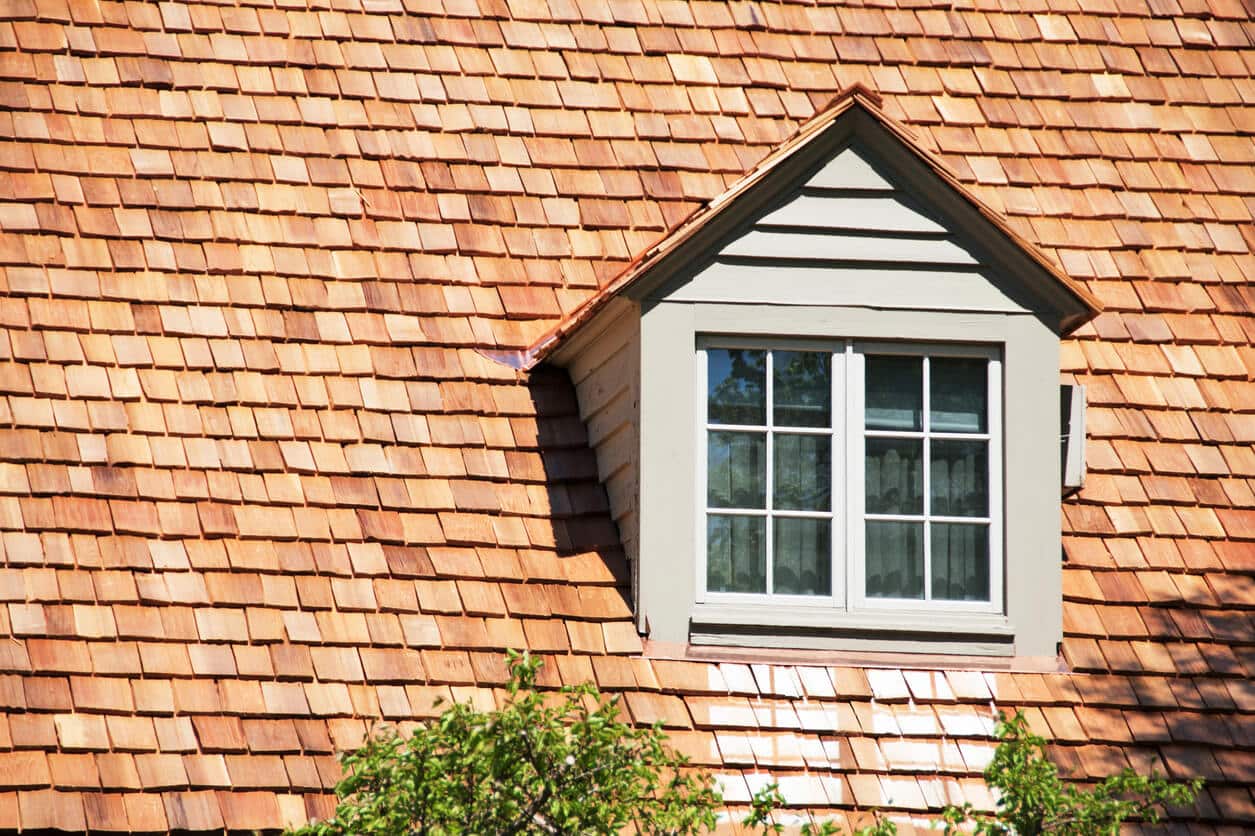
A cedar shake roof is one of those rare home features that manages to feel both rustic and refined. There’s something undeniably charming about those hand-split wooden shingles, especially as they weather over time, taking on a silvery-gray patina that whispers “character” with every gust of wind.
Homeowners are drawn to cedar not just for its natural beauty, but for the way it stands out in a sea of asphalt and metal rooftops. But here’s the thing. While cedar roofing looks like a dream, living with it isn’t always a fairy tale.
Like most things with character, a cedar shake roof comes with its quirks. It demands care, isn’t cheap, and won’t last forever. Yet for many, the visual payoff is worth every bit of the maintenance.
If you’re weighing the pros and cons of shake versus shingle, charm versus cost, or even wondering what a cedar shake roof exactly is, this guide breaks it all down with honest advice, no sugarcoating, no fluff. Let’s get into the real story behind the shingles.
What Is a Cedar Shake Roof?
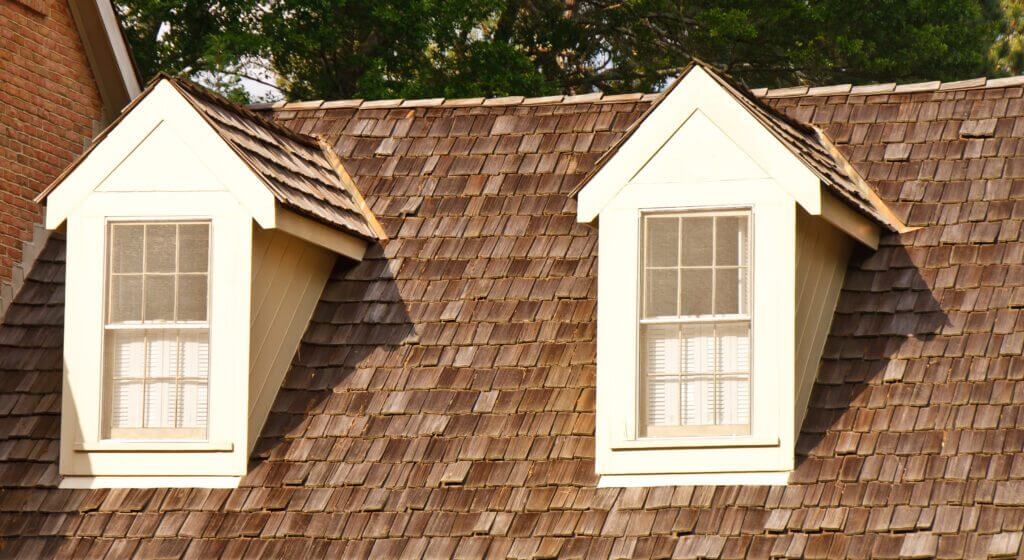
A cedar shake roof is a type of roofing made from natural cedar wood, typically western red cedar, hand-split or sawn into thick, rugged pieces known as “shakes.”
Unlike uniform asphalt shingles, cedar shakes are intentionally irregular, giving them a rustic, handcrafted look that adds depth and character to a home’s exterior.
Characteristics: Hand-Split Texture, Rustic Look, Dimensional Depth
Here’s a quick breakdown of the defining features of a cedar shake roof:
| Feature | Description |
| Material | Natural cedar wood, often western red cedar or Alaskan yellow cedar |
| Cut | Hand-split or taper-sawn for rough texture and irregular edges |
| Thickness | Generally ½” to ¾”, thicker than typical shingles |
| Surface Texture | Rugged, uneven, with visible wood grain and natural variation |
| Color Over Time | Starts warm brown, weathers to a silvery-gray patina |
| Installation Style | Overlapped and spaced to allow expansion, often installed over wood battens |
| Visual Effect | Deep shadow lines and rich texture that add dimension to the roofline |
| Customization | Available in different grades (select, common) and lengths (typically 18-24″) |
Common Use in Luxury Homes, Cabins, and Upscale Renovations
Cedar shake roofs are often found on luxury homes, lakefront cabins, and architect-designed renovations where aesthetics are non-negotiable.
The textured surface and natural hues make a cedar roof a top choice for homeowners who want their property to stand out without looking artificial. Whether it’s a custom-built estate or a mountain getaway, cedar shake roofing adds a classic elegance that’s hard to imitate.
Cedar Shake Roof Benefits (And Why Homeowners Still Love Them)
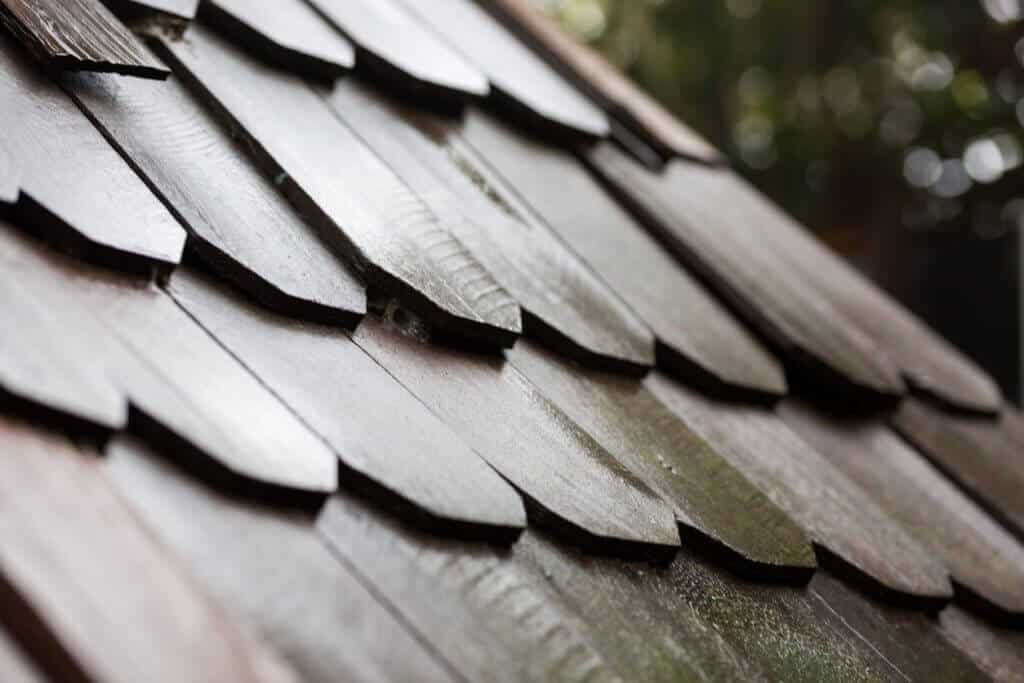
Yes, they’re more expensive and need more upkeep than the average roof. And still, cedar shake roofs have a dedicated fan base. Why? Because when they’re done right, they deliver a one-of-a-kind blend of beauty, performance, and sustainability.
1. Aesthetics: Natural Beauty and Premium Curb Appeal
Cedar offers a rich, textured appearance that evolves over time, starting with warm golden-brown tones and aging into a distinguished silver-gray.
This weathering process is part of its charm, giving the home a lived-in, yet upscale look. If your home has architectural details worth highlighting, a cedar shake shingle roof draws the eye and elevates curb appeal like few materials can.
2. Natural Insulation and Energy Efficiency
Cedar is a natural insulator, offering better thermal performance than asphalt shingles. The thick cedar wood shake roof helps reduce heat transfer, meaning homes stay cooler in summer and warmer in winter, without spiking the energy bill.
3. Durability When Maintained (30-50 Years)
A well-maintained cedar shake roof can last anywhere from 30 to 50 years, sometimes more.
The key word here is maintained—cedar needs occasional cleaning, treatment for moss or mildew, and replacement of damaged shakes. But if you’re up for the upkeep, it rewards you with serious staying power.
4. Environmentally Friendly and Biodegradable
Cedar is a renewable resource, and shake roofs are among the most eco-conscious roofing choices. They’re biodegradable, sustainably harvested (when sourced responsibly), and free of the heavy chemical treatments found in some synthetic roofing materials.
5. Comparison to Asphalt, Tile, and Synthetic Roofs
Here’s how a cedar shake roof stacks up against other common roofing materials:
| Feature | Cedar Shake Roof | Asphalt Shingles | Tile Roof | Synthetic Shake Roof |
| Lifespan | 30-50 years | 15-30 years | 40-75 years | 20-40 years |
| Cost (per sq. foot) | $8-$15+ | $2-$5 | $10-$20 | $7-$12 |
| Maintenance | Moderate to High | Low | Low to Moderate | Low |
| Appearance | Rustic and natural | Flat and uniform | Elegant, heavy | Realistic, varies by brand |
| Weight | Medium | Light | Heavy | Medium-Light |
| Eco-Friendliness | High (natural & biodegradable) | Low (petroleum-based) | Moderate | Moderate to Low |
| Fire Resistance | Low (unless treated) | Moderate to High | High | High (if rated) |
The Drawbacks: What to Know Before Choosing or Keeping a Shake Roof
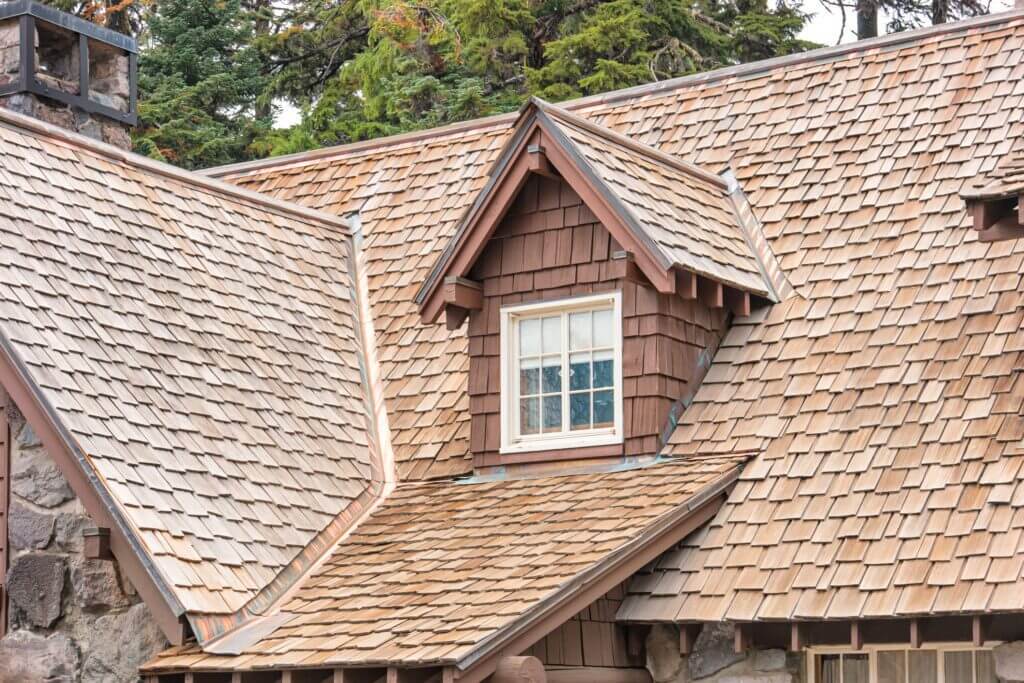
While the rustic charm and natural depth of a cedar shake are hard to resist, they come with a set of realities that homeowners should know before signing off on installation or continuing with an old cedar shake roof.
Maintenance Requirements (Moss, Mold, UV Exposure)
Cedar isn’t just wood; it’s living wood, even after it’s nailed to your roof. That means it’s constantly responding to the environment, and without regular upkeep, that dreamy cedar roof can quickly turn into a patchy, moldy mess. Common issues include:
- Moss and Algae Growth: Especially in damp or shaded areas, cedar shakes absorb moisture, creating an ideal environment for moss, lichen, and algae. These organisms trap moisture and accelerate decay.
- UV Damage: Prolonged exposure to sunlight dries out the cedar, causing the shakes to become brittle and lose their natural oils. Over time, this can lead to surface erosion and cracking.
- Debris Buildup: Leaves, pine needles, and other organic matter get stuck between the shakes, trapping moisture and encouraging rot.
Routine maintenance includes:
- Annual inspections and professional cleanings
- Occasional power washing with care (to avoid damaging the wood)
- Application of preservatives or treatments every few years
Higher Upfront Costs
Cedar shake roofs are premium for a reason. The material itself is more expensive than asphalt or synthetic alternatives, and the installation isn’t a quick job either. Each shake is installed by hand, requiring more labor and craftsmanship. Keep in mind that the following are just estimates, but should give you a good ballpark idea of what costs you’re looking at.
- Material Cost: Between $8 and $15+ per square foot
- Installation Cost: Significantly higher than standard shingle jobs due to complexity
- Treatment Costs: Fire- and rot-resistant treatments can raise the price even further
All told, a full cedar shake roof can cost two to three times as much as an asphalt shingle roof. And that’s before you factor in the long-term maintenance.
Susceptibility to Warping, Splitting, or Rot Without Care
The same natural features that make cedar beautiful also make it vulnerable. Shakes are sensitive to moisture, temperature fluctuations, and structural movement. Without consistent maintenance, you could run into:
- Warping: Uneven moisture absorption can cause the shakes to bend or curl.
- Splitting: Dried-out shakes become brittle and can crack, especially in high-heat or freeze-thaw climates.
- Rot and Decay: If water gets trapped under or between shakes, the wood can break down from the inside out.
These problems don’t just impact aesthetics, they can compromise your roof’s ability to keep water out.
Insurance and Fire Code Considerations (Depending on Treatments)
Because cedar is a natural material and combustible by default, many insurers either:
- Charge a higher premium for homes with untreated cedar roofs
- Require proof of Class A fire-resistant treatment
- Or in some wildfire-prone areas, deny coverage altogether
Local building codes may also restrict the use of cedar shake roofing in certain regions unless it’s specially treated with fire retardants. That treatment improves safety but also adds cost and may need reapplication over time to stay compliant.
Before installing or keeping a shake roof, it’s essential to:
- Check local building codes and HOA rules
- Ask your insurance provider about coverage limitations
- Confirm whether your cedar roof has Class A, B, or C fire resistance
So yes, a cedar roof brings charm and character, but it also brings responsibility. And unless you’re prepared to give it the care and respect it demands, you might find yourself wrestling with more hassle than harmony.
Cedar Shake Roof Maintenance: What Every Homeowner Should Do
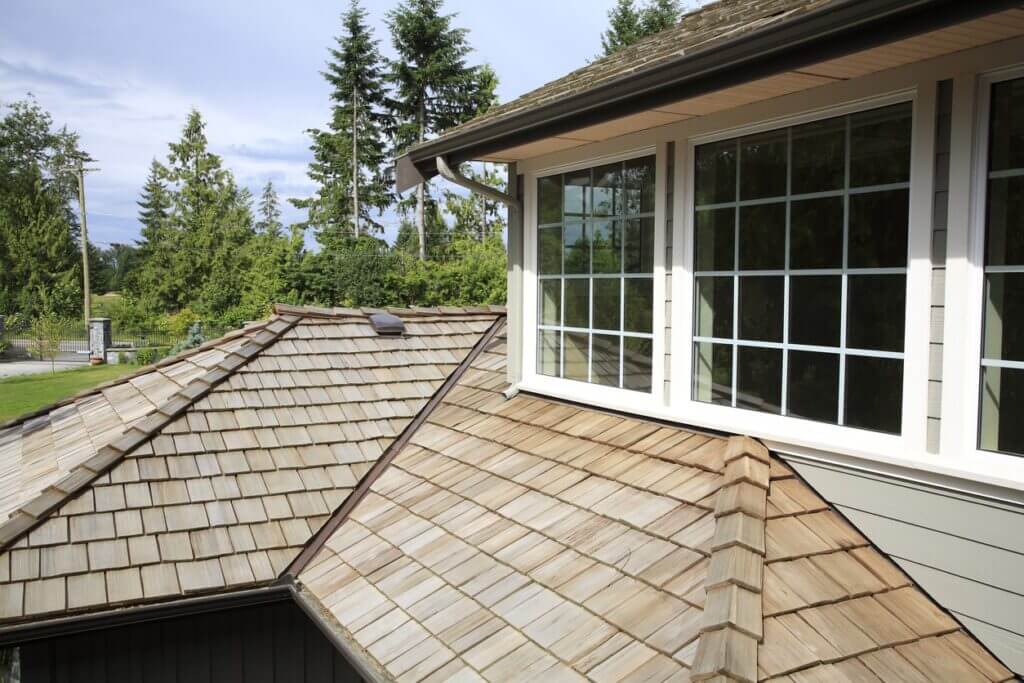
To get the most out of your cedar roofing, maintenance isn’t optional. It’s essential. Let’s explain why.
Annual Inspections for Moisture and Shake Condition
At least once a year, ideally in spring or fall, you should have your cedar roof inspected. This isn’t just about spotting loose shingles; it’s about identifying subtle signs of moisture damage, weathering, or early rot before they become structural issues.
Here’s what a thorough inspection should cover:
- Moisture Retention: Look for areas where shakes remain damp long after rain. These zones are prone to rot.
- Shake Integrity: Cracked, curling, or split shakes should be flagged for repair or replacement.
- Fasteners: Rusting nails or staples can lead to shake displacement or water infiltration.
- Flashing and valleys: These areas are critical for drainage and often where leaks start.
Cleaning off Debris, Moss, and Algae
Twigs, leaves, and pine needles clog the spaces between shakes, trap moisture, and encourage moss and algae growth. Once moss takes hold, it accelerates rot and loosens the shakes.
Here’s how to keep it clean:
- Use a soft-bristle broom or air blower, never a pressure washer unless you want to splinter your shakes.
- Treat moss or algae with a non-toxic, cedar-safe cleaner, ideally during dry weather.
- Avoid bleach-based solutions. They may work temporarily, but they can dry out and damage the wood.
Depending on your climate, cleaning may be needed once or twice per year. Damp, shaded regions will require more frequent upkeep.
Re-Treating With Preservatives or Fire-Retardants
Even if your cedar shake roof was treated when installed, those treatments degrade over time. Retreating is a smart and often necessary move to protect against UV exposure, moisture, insects, and fire risk.
There are two key types of treatments:
- Wood Preservatives: These help maintain the cedar’s natural oils, reduce cracking, and resist fungal growth.
- Fire Retardants: Essential in wildfire-prone areas or where insurance policies require Class A or B fire ratings.
Gutter Maintenance and Roof Ventilation
Good airflow and water drainage are the unsung heroes of a healthy cedar shake roof. If gutters are clogged or attic ventilation is poor, moisture builds up, and cedar doesn’t like that one bit.
Make sure to:
- Clean gutters and downspouts at least twice a year to prevent overflow and shake saturation.
- Check attic ventilation to ensure warm, moist air isn’t getting trapped beneath the roof deck. This can warp shakes from below.
- Consider adding a ridge vent or soffit vents if ventilation is lacking.
Recommended Schedule and Checklist
Here’s a simple seasonal schedule to keep your cedar roofing in top shape:
Spring
- Inspect for winter damage: cracked, missing, or warped shakes
- Clean gutters and downspouts
- Remove any new moss or algae growth
- Schedule a professional inspection if needed
Summer
- Apply treatments if due (best done in dry, warm weather)
- Inspect for sun damage or extreme dryness in shakes
- Check attic ventilation during heat spikes
Fall
- Clear debris before leaves pile up
- Final moss and algae treatment before winter dampness
- Clean gutters again after leaf fall
- Replace damaged shakes before snow or rain sets in
Winter
- Avoid walking on the roof because the shakes become brittle in cold weather
- Monitor for ice damming or snow buildup in valleys
- Check interior ceilings for signs of leaks or moisture intrusion
Replacement Options: Real Cedar vs. Synthetic Shakes
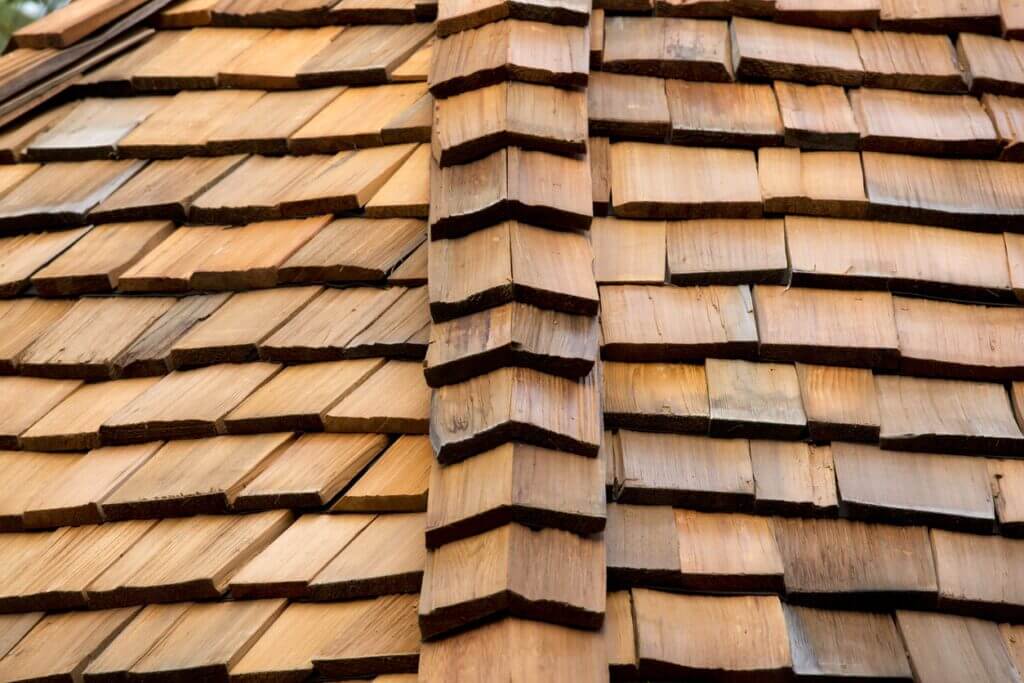
If your cedar shake roof is starting to show more character than function, cracking, curling, or leaking, it might be time to think about replacement.
So, should you stick with natural cedar, or explore the new wave of composite cedar shake shingles? Let’s weigh the options.
Pros and Cons of Natural Cedar vs. Synthetic Alternatives
Real cedar shake roofs have history, charm, and craftsmanship on their side. But synthetic shake roofing materials, made from engineered polymers or rubber-composite blends, are gaining ground thanks to their durability and ease of upkeep.
Here’s a quick breakdown of pros and cons:
Pros of Natural Cedar Shake Roof:
- Unmatched natural beauty and authentic texture
- Biodegradable and renewable
- Excellent insulation properties
- Adds classic appeal and warmth to any home
Cons of Natural Cedar Shake Roof:
- Requires regular maintenance (cleaning, treatment, repairs)
- Prone to moss, mold, and UV degradation
- More expensive to install and maintain
- Variable fire resistance unless treated
Pros of Synthetic Cedar Shake Roof:
- Lower maintenance (no sealing, treating, or moss removal)
- Class A fire ratings and high impact resistance are available
- Consistent in appearance, resistant to warping or rotting
- Can last 40-50 years or more with minimal upkeep
Cons of Synthetic Cedar Shake Roof:
- Higher material cost upfront for premium brands
- May not age or weather like real cedar
- Some products look less authentic up close
- Not biodegradable, though many are recyclable
The choice often comes down to priorities: natural charm and tradition vs. long-term practicality and convenience.
Composite Cedar Shake Shingles (Look-Alikes With Lower Maintenance)
Composite or synthetic cedar shake shingles are engineered to replicate the look of natural cedar, right down to the grain and irregular edges. Brands like DaVinci Roofscapes, Brava, and CertainTeed have developed high-end options that are UV-resistant, hail-rated, and even fire-class certified, meaning fewer headaches for homeowners in extreme climates.
These shingles are typically made from a combination of polymers, recycled plastic, or rubber, and are molded from actual cedar shakes to capture realistic texture and depth. Many of them are installed using similar techniques as real wood shakes, but without the unpredictability of natural material.
If you love the look of a cedar shake roof but hate the idea of treating it every few years or replacing broken shakes after every storm, composite shakes offer a low-maintenance way to get the best of both worlds.
Longevity, Appearance, Cost, and Resale Value
When deciding between a cedar wood shake roof and a synthetic alternative, these four factors usually drive the decision:
| Feature | Natural Cedar Shakes | Synthetic Cedar Shakes |
| Longevity | 30-50 years (with maintenance) | 40-50+ years (minimal upkeep) |
| Appearance | Natural texture, rustic aging | Consistent, fade-resistant |
| Cost | $8-$15+ per sq. ft. | $10-$16 per sq. ft. (premium) |
| Resale Value | High, if well maintained | High, especially in modern builds |
Mr. Roofer’s Expertise in Both Materials and Installation Practice
Mr. Roofer has decades of experience with both real and synthetic cedar shake roof systems, offering expert craftsmanship, honest advice, and long-term reliability.
Here’s what sets us apart:
- Certified roofers in both natural and composite shake installations
- Detailed inspection and consultation process to help homeowners choose the best material for their climate, budget, and aesthetic goals
- Flawless flashing, ventilation, and underlayment practices to extend the life of your shake roof, no shortcuts, ever
- Repairs, replacements, and custom installs backed by warranty and client support
Why Cedar Roofing Requires a Specialist—Not Just Any Roofer
Installing or replacing a cedar shake roof comes with irregularities, natural materials, and unique installation techniques that demand more than a “one-size-fits-all” approach.
That’s why you need a specialist who understands the nuances of cedar roofing systems, because the wrong hands can turn your premium roof into a premium problem.
Common Mistakes Made by General Roofers Unfamiliar With Shake Systems
Some of the most common (and costly) mistakes include:
- Over-nailing or using the wrong fasteners, which can split the shakes and compromise water resistance
- Incorrect spacing between shakes, leading to poor ventilation and trapped moisture
- Improper staggering, which affects aesthetics and function, creates weak points
- Lack of material knowledge, resulting in the use of untreated or inferior wood products
These errors can shave years off the life of a cedar shake shingle roof and lead to premature repairs, rot, or worse, complete tear-offs within a decade.
Importance of Experience With Flashing, Underlayments, and Ventilation
What makes or breaks a cedar shake roof isn’t just the shakes, it’s what happens beneath and around them. Properly installed flashing, breathable underlayments, and ridge-to-eave ventilation are critical to the roof’s performance.
Why it matters:
- Flashing: Poor flashing allows water intrusion at valleys, chimneys, and edges—prime areas for hidden rot.
- Underlayment: Cedar shakes need to “breathe.” Specialized underlayments prevent moisture buildup while allowing the wood to expand and contract naturally.
- Ventilation: Without airflow, trapped heat and moisture accelerate shake deterioration from the underside.
Experienced cedar roofing specialists know how to balance durability, airflow, and water shedding to ensure your cedar roof lives up to its potential.
Conclusion
A cedar shake roof offers timeless appeal, natural insulation, and impressive longevity, but only if it’s installed and maintained with the skill it deserves. Whether you’re restoring an old cedar shake roof or replacing it with composite cedar roofing, having the right team matters.
At Mr. Roofer, we don’t just install roofs, we craft them. With decades of experience in both natural cedar and synthetic shake systems, we help homeowners make confident, informed choices. From consultation to cleanup, we bring precision, personality, and professionalism to every job.
Ready to talk shakes? Reach out for a no-pressure inspection or quote. Let’s protect your home and elevate its curb appeal, with a roof that’s as dependable as it is beautiful.
